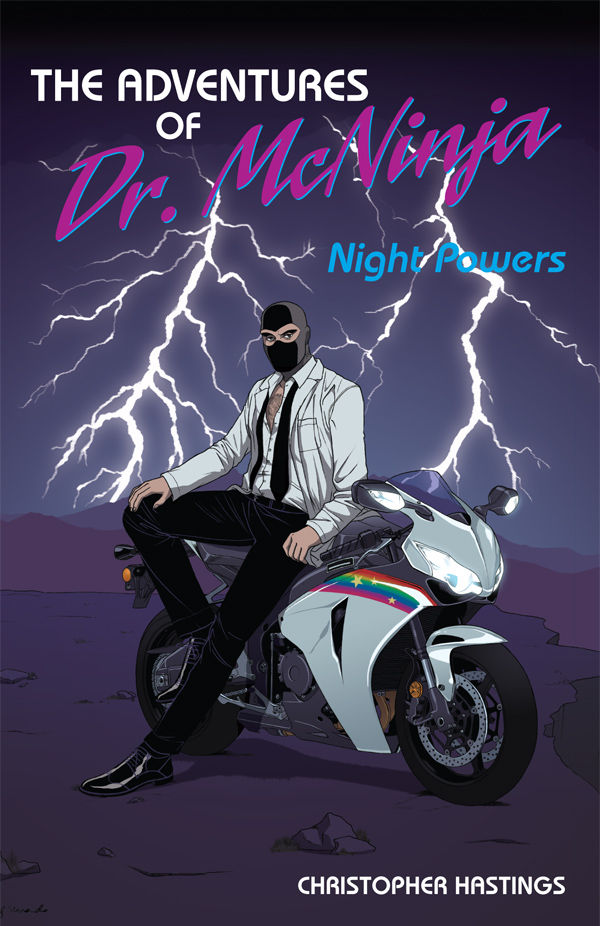Redbelt
 Rob Dean On
Rob Dean On  Thursday, July 7, 2011 at 3:00PM
Thursday, July 7, 2011 at 3:00PM Rob Dean examines the overlooked, unappreciated or unfairly maligned movies. Sometimes these films haven't been seen by anyone, and sometimes they've been seen by everyone - who loathed them. This is Missing Reels.
 "The hands are not the issue. The fight is the issue. The battle is the issue. Who imposes the terms of the battle will impose the terms of the peace. Think he has a handicap? No. The other guy has a handicap if he cannot control himself. You control yourself, you control him."
"The hands are not the issue. The fight is the issue. The battle is the issue. Who imposes the terms of the battle will impose the terms of the peace. Think he has a handicap? No. The other guy has a handicap if he cannot control himself. You control yourself, you control him."
We are at a point of divergence in the history of action movies - it's happened previously, where two philosophies are diametrically opposed and stand in stark contrast with each other. One is the more popular, socially acceptable version that is equated with money, gloss and mindless fun that is represented by Hollywood. The other is more associated with smaller films, critical acceptance, international audiences and a lack of funds that is offset by a display of skill. I'm talking about Explosions vs. Fights.
Please note - these are overarching terms meant to reductively label two mindsets. They are not mutually exclusive, per se, nor fully descriptive of the issues at hand. But, for the purposes of this discussion, it's easiest to separate these two worlds using these (notably obsolete) words.
The School of Explosions is presided over by Jerry Bruckheimer and Michael Bay - it's the world of the flashy spectacle where excess is encouraged and there is no gesture considered "too broad" or an action setpiece that can be seen as "too convoluted." A reliance on celebrities, pretty people, and CGI, films made in the School of Explosions are geared towards ADHD addled audiences more interested in seeing something cool than seeing something that makes sense - even using the shaky internal logic of the movie itself.
School of Explosions isn't new or limited to the work of Bruckheimer/Bay - it's always been an element of filmmaking. In the 70s to mid-80s, the sign of such decadence was destroying cars - having pile up after pile up and crash after crash of dozens if not hundreds of cars. The mid-80s to mid-90s saw the rise of the explosion - destroying blocks of cityscapes, fleets of planes, boats, cars and other large pieces of machinery thrown into the fire as a testament to the size of the budget and the swagger of the filmmaker. 90s to 2000s demonstrated their devotion to the School of Explosions by having elaborate set pieces - Rube Goldberg-like designs involving complicated elements coming together in haphazard ways that were equal parts brilliant and insane. Die Hard with a Vengeance, Speed, Cliffhanger, The Rock, Demolition Man, Last Boy Scout, Last Action Hero, Long Kiss Goodnight all had scenes of utter batshit insanity that constantly attempted to out-EXXXTREME each other. The 2000s then began to assimilate CGI in appeasing the Gods of the School of Explosions - this proved that not only were these filmmakers cutting edge, but they had a serious bankroll behind them all in service of making the impossible seem possible in their movies. The current crop of School of Explosions movies is actually the culmination of all of that has come before it - reckless destruction of landmarks and icons of industry/progress bathed in flames delivered in a needlessly complicated manner depicted in expensive CGI.
 It is not inherently bad, mind you - it's the visual equivalent of an 80s power ballad: aimed at the largest audience/demographic possible, manufactured to be inoffensive and unchallenging, but the movie can still elicit an emotional response from the audience and can be a fun, diverting mindless excursion. Controlled, corporate approved mayhem for its own sake.
It is not inherently bad, mind you - it's the visual equivalent of an 80s power ballad: aimed at the largest audience/demographic possible, manufactured to be inoffensive and unchallenging, but the movie can still elicit an emotional response from the audience and can be a fun, diverting mindless excursion. Controlled, corporate approved mayhem for its own sake.
The other mindset when it comes to action movies is the School of Fights - this is the less flashy style of movie that relies on the intensity of situation and the "hardcore nature" of its characters to excite audiences. Such minimalism in presenting a frenetic storyline tends to be a side effect of having a small budget. The shots are closer one or two shots, usually focusing on just the characters or the body parts that are bashing into each other. Plot and characterization take prominence over the utter spectacle and wanton destruction of School of Explosions - again, often due to budget constraints. Now the star of the film isn't the fireball, it's the loose cannon cop that is going to get results. It's the well explained (although not necessarily well reasoned) motivation for characters' actions and it's the elaborately choreographed fight scenes that rely more on physical prowess and stunt expertise of the cast and crew then it does on dynamic camera angles or flashy editing. These movies are on a smaller (almost personal) scale, usually involve revenge or rescue scenarios and are interested in creating characters that can act as the audience's surrogate or role model.
Just because it's smaller, more "personal" than the big budget films doesn't always guarrantee a quality movie. There's still the occasion for cliched dialogue, large gaps in logic and a lack of unified tone can lead from a "sad" scene to a cartoonish fight sequence so quickly it causes whiplash. But there is still the possibility for the auteur to express something deeper and more personal through the fight - after all, there are few occurrences rife with metaphorical possibilities than a physical struggle between two entities. It can be man vs. mortality, corporations vs. the every man, modernity vs. tradition or, to quote Adaptation, "it's like a battle between motors and horses, like technology vs. horse."
 Today's film, Redbelt (2008), fits squarely in the School of Fights and is a shining example of an auteur's passions coming together around a cracking final fight sequence. Well received by critics but ultimately ignored by most people, Redbelt is an examination on where honor exists in our modern world, and particularly if it can survive in the world of entertainment, showmanship and profit margins. Oh and it's written and directed by David motherfucking Mamet.
Today's film, Redbelt (2008), fits squarely in the School of Fights and is a shining example of an auteur's passions coming together around a cracking final fight sequence. Well received by critics but ultimately ignored by most people, Redbelt is an examination on where honor exists in our modern world, and particularly if it can survive in the world of entertainment, showmanship and profit margins. Oh and it's written and directed by David motherfucking Mamet.
I'm sure people will protest classifying Redbelt as an action movie. There's really only 1 or 2 real action sequences - although they are pretty badass - and its very subdued and rough for an action film. In reality, people are just reacting to the name of the writer/director. David Mamet, well known and deservedly respected for his work on stage and film with such genre defying instant classics like American Buffalo, Speed the Plow, Glengarry Glen Ross, The Spanish Prisoner, House of Games, Spartan and Wag the Dog. Mamet's primary interests and running theme in his works is the relationship between language, manipulation, confidence games and layers of deceit. He is one of those precious artists whose complex machinations, carefully constructed dialogue and characters immediately appeal to critics while his lower level language (he likes to say "fuck") and twisty plots appeal to most audiences. So the idea of David Mamet making an action movie is an apocryphal, blaspehmous statement - but the fact is that is exactly what Redbelt is. If you removed Mamet's name, this film would be like a greatly improved version of Karate Kid Part III (with shady corporate folks manipulating idealistic fighters all leading up to one major showdown). But Mamet's name - and undeniable talent - elevate the film and therefore may trick people into thinking this isn't an action film.
Redbelt stars Chiwetel Ejiofor as Mike Terry, an instructor of mixed martial arts/jiu-jitsu in California, who is financially struggling because of his emphasis on honor instead of profit. This lack of prosperity chagrins his wife, Sondra (played by Alice Braga), who comes from a successful and respected family of Brazilian fighters. Mamet uses Mike to espouse his own stance that fighting isn't a means to inflict pain on someone - it's a meditation on controlling situations and people, about recognizing strengths and weaknesses, and a method that stresses assessing situations honestly and correctly. There are various occurrences involving Tim Allen as a boozy action star, greatest NFL blocker Joe Mantegna as a shady lawyer, Emily Mortimer as a woman trying to reject her victim label, and Ricky Jay being his usual badass self. Like most Mamet plots, it's twisty and turny and involves multiple characters trying to control and/or screw over other characters, so it's not ideal to go into too much detail of the story - suffice it to say, it's good. Redbelt really is The Spanish Prisoner but with more headlocks.
The film came from Mamet's own love of Brazilian jiu-jitsu (which he's been practicing with his good friend Ed O'Neil for many years) and uses each bout as a way of examining how people use others to get what they want and to control situations.  The personal love of the sport combined with Mamet's obsession with con artists and the malleable nature of trust produces a film that is different than any other fighting movie out there. Some of the plot devices are a bit hokey and overwrought, but you forgive them because of the great performances, excellent writing, and the searing intensity that seems to lie underneath everyone's actions and words. Redbelt is an action movie that is engaging, smart, nuanced and leaves you feeling like you enjoyed the film on multiple levels - intellectually and in the thrill of seeing someone get his ass kicked.
The personal love of the sport combined with Mamet's obsession with con artists and the malleable nature of trust produces a film that is different than any other fighting movie out there. Some of the plot devices are a bit hokey and overwrought, but you forgive them because of the great performances, excellent writing, and the searing intensity that seems to lie underneath everyone's actions and words. Redbelt is an action movie that is engaging, smart, nuanced and leaves you feeling like you enjoyed the film on multiple levels - intellectually and in the thrill of seeing someone get his ass kicked.
Redbelt is the title bestowed to a martial arts master that has taught people for many decades. It is also awarded to those martial artists that create their own school or brand of fighting. Mamet earns his own redbelt in this singular film that depicts a man's struggle to retain his honor even while all those around him lose theirs.








Reader Comments